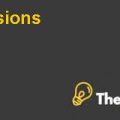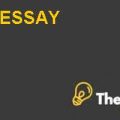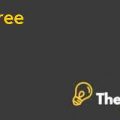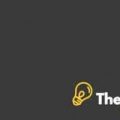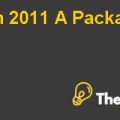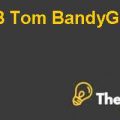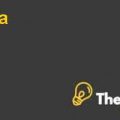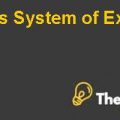Thurgood Marshall High School
Introduction
Thurgood Marshall High School, based in Great Falls, Illinois is regarded as the highest quality education provider in the city through its innovation in education and teaching methods. Since the High School had opened its new branch in the city it faced many problems relating to violence, conflicts amongst housemasters and department heads, vacancy in top management positions, and trust and collaborative approach amongst different administrative staff members. The superintendent of Thurgood Marshall High School has appointed David Kane as Principal of the High College. Kane has faced many tough situations in his relevant field and has been asked by the superintendent to manage the issues circulating the High School. David Kane is eager to maintain the same reputation of the High School, whence it was previously regarded as an innovator in inner-city education.
The paper attempts to describe a brief summary of the case highlighting the key incidents and the problem statement. The paper also ascertains a conceptual model while defining its key elements. Furthermore, the paper also describes the application of the model relating to the case. Lastly, the paper summarizes the key findings and provides recommendations in contrast to the analysis.
Conceptual Model
Overview of Expectancy Theory of Motivation
The Expectancy theory of motivation describes an individual behavior based on a specific action and helps in explaining of why different individuals behave and respond differently to a similar situation. It is a cognitive process which enables to calculate the motivational force of individuals through their efforts, performance, and outcome (Ivancevich, Konopaske, & Matteson, 2011). The key elements of the model are expectancy, instrumentality, and valence. The expectancy factor is related to the effort and performance of an individual. It expresses that the higher efforts will result in higher performance. The second key element is instrumentality which describes the performance and reward relationship (Nelson & Quick, 2013). It expresses that the higher performance will ultimately lead to higher rewards attainment. The third key element of the expectancy model is valence which describes the individuals’ value in attaining the rewards or a positive outcome. A positive valence will lead to positive outcomes, whereas, the negative valence leads to negative outcomes (Ivancevich, Konopaske, & Matteson, 2011).
Application of the Model
Expectancy
Expectancy is an approach combining the effort and the performance of an individual. It is a perception of an individual that in order to perform better, an individual has to put a considerable amount of effort (Ivancevich, Konopaske, & Matteson, 2011). The evaluation of this key element can be attained through the past experiences of an individual, type of personality, the emotional state, and the confidence that it carries (Ivancevich, Konopaske, & Matteson, 2011).
Instrumentality
Instrumentality is an approach combining performance and rewards. An individual perception is developed that the reward and positive outcomes can only be achieved through better performance (Phillips & Gully, 2012). The reward can be regarded as sense of accomplishment, or pay raise, and promotion to the higher grade. If there is no difference in evaluating the performance of an individual, then the instrumentality would be low (Ivancevich, Konopaske, & Matteson, 2011).
Valence
Valence is defined as an element of value towards receiving a reward or an outcome. The value includes the goals, the motivation source, or the needs of an individual. It is regarded as the satisfaction level for a particular outcome. While combining together the three elements reveal the motivational force of an individual (French, Rayner, Rees, & Rumble, 2011).
Application
Expectancy in Terms of the Case
While considering the expectancy elements regarding the perspective of a newly appointed principal of Thurgood Marshall’s High School, it can be stated that he put extreme efforts in understanding the problems, the key people, and to understand much about the school’s environment. Kane conducted meetings with all the administrative staff members through combined meetings and individual based meetings to understand the real cause of the problem. After thorough consideration, Kane decided to understand the individual behaviors of each Housemaster and department heads. He gathered information that Wesley Chase was very bright and a charismatic leader, but some of his unique education innovations, he was criticized by the head of departments for not following the curriculum guidelines. About Wilkins, Kane believed he mastered in developing schedules, but he lacked certain leadership skills. Therefore, the ability to address problems was the key factors that helped Kane in deciphering the problems. Kane had the required experience and a certain amount of proven capabilities to lead a team with administrative and leadership skills.
Thurgood Marshall High School Case Solution
Instrumentality in Terms of the Case
The performance of the administrative staff including the department heads, Housemasters, and faculty members. The element of trust between these designations was lacking a great deal which was becoming.............
This is just a sample partial case solution. Please place the order on the website to order your own originally done case solution.
Gifts challenge facing the newly appointed high school. Raises questions of interpersonal and group behavior, including the absence of open conflict settlement and the need to intervene in interpersonal conflicts. Also raised the issue of inter-group conflict between the directors and the chairman of the Department, as well as the value of the issues relating to the need of discipline and innovation. We discuss some of the structural issues concerning the current "house system" organization. Rewritten version of the previous case. "Hide
by John J. Gabarro Source: Harvard Business School 8 pages. Publication Date: November 18, 1993. Prod. #: 494070-PDF-ENG

